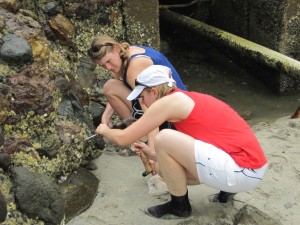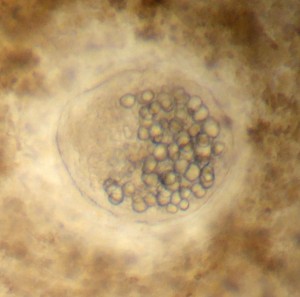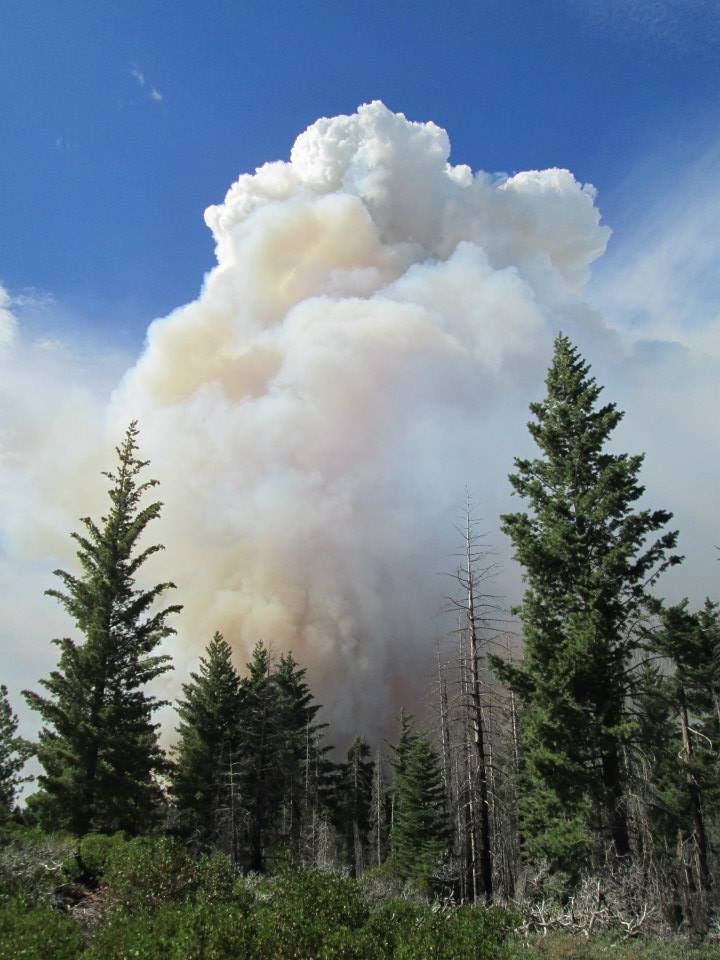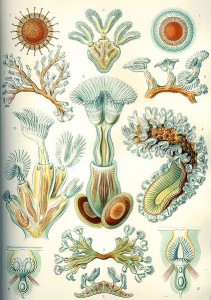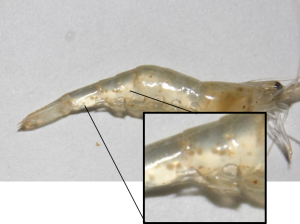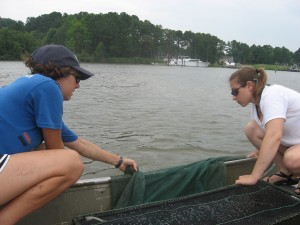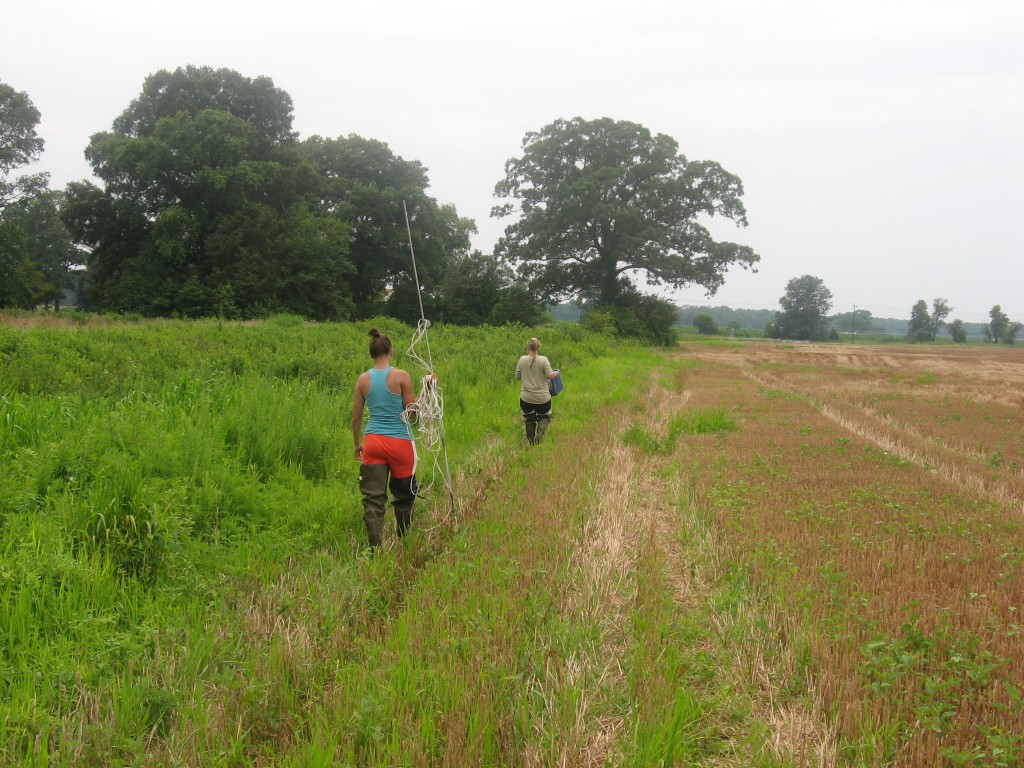by Katie Sinclair
Katrina Lohan and Kristy Hill have travelled thousands of miles down the Atlantic Coast, from the Chesapeake to the Caribbean. Their goal? Track the range and distribution of parasites in bivalve mollusks that could cause disease. Based on diversity patterns, Hill and Lohan suspect that there are many more protist species in the tropics than have previously been discovered. These parasites could be very similar to the parasites that have caused mass die-offs in Chesapeake oyster beds with diseases like Dermo and MSX. But there’s one catch: The protists that are parasitizing the bivalves are difficult to identify just by looking at them. Luckily for Lohan and Hill, advances in DNA sequencing can reveal secrets about little-studied and poorly understood organisms. Already famous for helping improve human health, DNA sequencing is proving equally adept at preserving the planet’s health. From the tropics of Panama to the forests of Maryland, the rise in DNA sequencing is opening new realms of possibility for ecologists at the Smithsonian Environmental Research Center and across the world.Ecology
...now browsing by category
Decoding Nature: How DNA Can Save Species
Tuesday, September 17th, 2013Methylmercury Microbes More Widespread Than Realized
Thursday, September 12th, 2013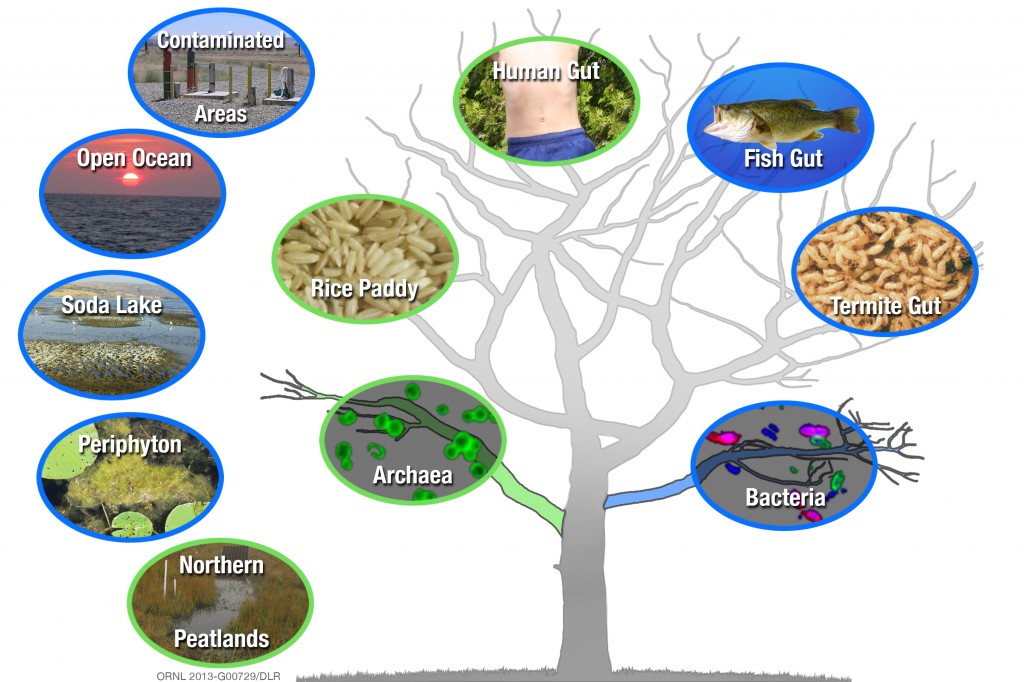
New places scientists discovered can contain the microbes–Archaea and Bacteria–that create the dangerous neurotoxin methylmercury. (SERC & ORNL)
Microbes that live in rice paddies, northern peat lands and beyond are among the several types of bacteria researchers at the Smithsonian Environmental Research Center and Oak Ridge National Laboratory have just learned can generate highly toxic methylmercury.
This finding, published Wednesday in Environmental Science & Technology, explains why methylated mercury, a neurotoxin, is produced in areas with no previously identified mercury-methylating bacteria. Methylmercury—the most dangerous form of mercury—damages the brain and immune system and is especially harmful for developing embryos. Certain bacteria transform inorganic mercury from pollution into toxic methylmercury.
From the Field: Mangroves, Salt Marshes and Hungry Insects
Wednesday, September 11th, 2013by Lily Durkee
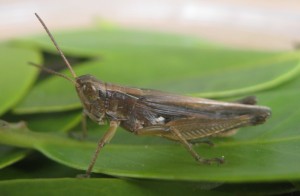
Spotted-winged grasshopper, one of two insect herbivores the team tested to see if they would eat mangrove leaves.
(Alex Forde/UMD)
My mentor, Alex Forde, and I were there conducting experiments for his dissertation and for my internship project. This whole summer we had been studying plant resistance to herbivores, so we were excited to document interactions between leaf-eating insects and black mangrove trees (Avicennia germinans) in Northern Florida salt marshes.
Over the past several decades, climate change has allowed black mangroves to move north along the Florida coastline. As a result, they are invading salt marshes and coming into contact with novel herbivores that are not common in mangrove forests further south. Depending on the behavior and food preferences of marsh herbivores, these species may affect how fast mangroves spread into salt marshes and where the trees are able to survive within marsh landscapes. Therefore, we wanted to test (1) whether salt marsh herbivores will eat mangrove leaves when marsh plants are also available, and (2) if salt marsh herbivores show a preference for leaves of different ages or for trees growing in different habitats.
Smithsonian Plot Burns in Yosemite Fires
Wednesday, September 4th, 2013by Kristen Minogue
As the Rim Fire burns deeper into Yosemite, park managers are fighting fire with fire—and one of the Smithsonian’s ForestGEO plots was caught in the middle this weekend.The Yosemite Forest Dynamics Plot sits just north of Yosemite Valley, and south of the wildfire that has already consumed more than 60,000 acres of the national park. It is part of the Smithsonian’s Forest Global Earth Observatory (ForestGEO), a network of 48 plots around the globe that scientists are measuring to understand forest dynamics and climate change. Two of Yosemite’s giant sequoia groves and many large trees also sit near the plot, and managers didn’t want to see the entire forest go up in flames.
There’s No “I” in Bryozoan
Friday, August 23rd, 2013By Katie Sinclair
All for one and one for all is a motto that bryozoans would take close to heart, if they had hearts, that is. This phylum is made up of 4,000 or so species, almost all of which are colonial. Individuals, called zooids, can’t survive on their own and depend on their fellow colony members to help gather nutrients, get rid of waste, and reproduce. Though sedentary as adults (a few species are able to creep slowly), bryozoans are able to spread through the dispersal of larvae in the water column. If a piece of the colony is broken off, it can survive and form a new colony. Known commonly as “moss animals” most bryozoans live up to the name, resembling robust pond scum. Some species, such as those in the Watersipora genus, form leaf-like, calcareous colonies that can serve as habitat for other animals. Click to continue »
Parasites and Suicidal Shrimp
Wednesday, August 21st, 2013By Katie Sinclair
While the idea of playing host to something out of the movie Alien is decidedly unpleasant, it’s hard not to marvel at the exquisite grossness of microscopic parasites. Parasites take advantage of their hosts for resources and shelter, but research on parasites suggests that they also can manipulate their hosts’ behavior: Crickets will drown themselves, snails position themselves to be eaten by birds, and some theories suggest that cat-lovers infected with the parasite Toxoplasma gondii become self-destructively reckless. More than half the known species in the world are parasites—making parasitism the most popular lifestyle on Earth.
At the Smithsonian Environmental Research Center (SERC), the Marine Invasions Lab has been tracking parasites in grass shrimp, an incredibly common near shore species. Rates of parasitism are extremely high in grass shrimp, with some years 90 percent of the shrimp caught displaying parasite infection. The most common parasite is a trematode that forms cysts in the tail of the shrimp. Sara Gonzalez, who interned with SERC this summer, wanted to see if parasitized shrimp displayed different predator avoidance behaviors than unparasitized shrimp. Because the trematode only reproduces in birds and mammals, the parasite must find a way to make its way up the food chain. Sara suspected that infected shrimp will change their behavior in a way that makes them more vulnerable to predators like mummichogs. The parasite does not infect the mummichogs directly, but mummichogs are prey for mammals and birds. If a mummichog that has ingested an infected shrimp gets eaten by a bird or mammal, then the parasite will be able to reproduce.
Click to continue »
Trees, Poison Ivy and Climate Change
Monday, August 12th, 2013By Katie Sinclair

Intern Hope Zabronsky measures the diameter of a tree to see how logging affects biomass regeneration
Summer is almost over, which means intern season is coming to a close. Over 20 interns from universities across the United States have spent their summers here at SERC, studying everything from phytoplankton to Phragmites. Several interns chose to take on the challenge of climate change, exploring how trees will affect rising levels of greenhouse gases.
Mysterious Methane
Although methane emissions worldwide are much lower than CO2 emissions, a little methane goes a long way: Methane is 25 times as powerful a greenhouse gas as CO2. While we have an idea of what the sources of methane are, researchers face difficulties when trying to model methane emissions. The biggest discrepancy is between “top-down” and “bottom-up” models. Top-down approaches use satellite imagery to track the amount of methane in the atmosphere, while bottom-up methods look at the amount of methane emitted from the soil.
The Biogeochemistry Lab wants to see if methane is coming from sources other than the soil. Marsh grasses are known to emit methane, but no research has yet been done on trees. Figuring out if and how much methane is emitted can help determine whether methane projections are accurate. The Biogeochemistry Lab has set up two experimental sites to study methane, and is working on establishing a third.
Intern Kyle King worked on methane emissions this summer. He attached airtight chambers to trees, and measured the gas concentrations at different heights along the tree. He found that trees did emit methane, in some cases more than microbes in the soil. Methane emissions were highest near the roots and less at higher trunk heights. He also found that larger trees emitted much more methane than smaller ones.
The exact mechanism of how trees release methane is not yet understood. Two possibilities are methane diffusing out of the water that is taken in by the plants’ roots, or microbes inside the tree producing methane. But whatever the cause, understanding where methane comes from will be vital when trying to predict the impact of climate change.
Click to continue »
From the Field: Lizards, Spiders and Mangroves
Tuesday, August 6th, 2013by Micah Miles, SERC intern and UMD undergraduate
If you have ever visited coastal Florida, you have probably run across some lizards. Lots of them.
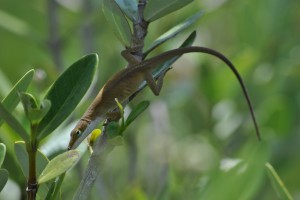
Green anole seen near the Smithsonian Marine Station. Scientists aren’t sure whether anoles are helping or hurting mangroves in Florida. (Micah Miles)
The Crab Tow Tango
Monday, July 29th, 2013by Katie Sinclair
There is a certain art to the deployment of a crab tow. This brown metal and net contraption, about three feet long and a foot wide, scrapes over the bottom in search of juvenile blue crabs. Fitting three people, two coolers, a selection of buckets and bins and the tow in a 16-foot jon boat is something akin to a giant game of Tetris. Successfully launching and recovering the crab tow without smacking anyone in the face or knocking anything overboard requires practiced choreography and grace.
With a one-two-three, the metal tow hits the water with a splash. After 300 feet, lab tech Paige Roberts gracefully maneuvers the jon boat backwards and forwards to retrieve the tow. Paige captains the jon boat a bit like a fighter pilot—precision is required to coax the unwieldy boat around shoals, patches of sea grass and oblivious jetskiers. Click to continue »
Hunt for a Missing Nutrient: Part II
Wednesday, July 24th, 2013By Katie Sinclair
The nutrient lab is still plagued by the mystery of the missing nitrogen. More nitrogen enters the watershed than exits it, and the question remains: Why?
How much nitrogen makes it to the bay can have huge impacts on the water quality and bay health. The Choptank watershed, in a farm-heavy area, has much lower levels of nitrogen in stream water than expected. As farmers add fertilizer to their crops, some nitrogen gets taken up by the plants, and the rest washes away into the watershed , eventually reaching the Chesapeake Bay. Of the nitrogen that is added as fertilizer, only 20 to 30 percent of it is accounted for.
In a narrow, slow-moving stream in the Choptank watershed, fondly nicknamed “Pizza Branch” (due to its proximity to a lone pizza joint puzzlingly located in this predominantly farming area), researchers working under Tom Jordan, Principal investigator of the nutrient lab at SERC, are using different methods to help determine what’s happening to the nitrogen. The project is a joint effort between SERC and Tom Fisher’s lab at the Horn Point Laboratory of the University of Maryland.
Researchers brave high heat, humidity, and voracious mosquitoes to take water samples, a process that can take all day. While taking water from a stream may seem like a straightforward undertaking, the true complexity comes through in the lab, where analysis of microscopic dissolved compounds can reveal the secrets of a watershed.
“It’s a fun challenge to go all over a stream and take samples and bring them back to the lab, to discover things you can’t see with your eyes,” said Jordan.
Click to continue »

